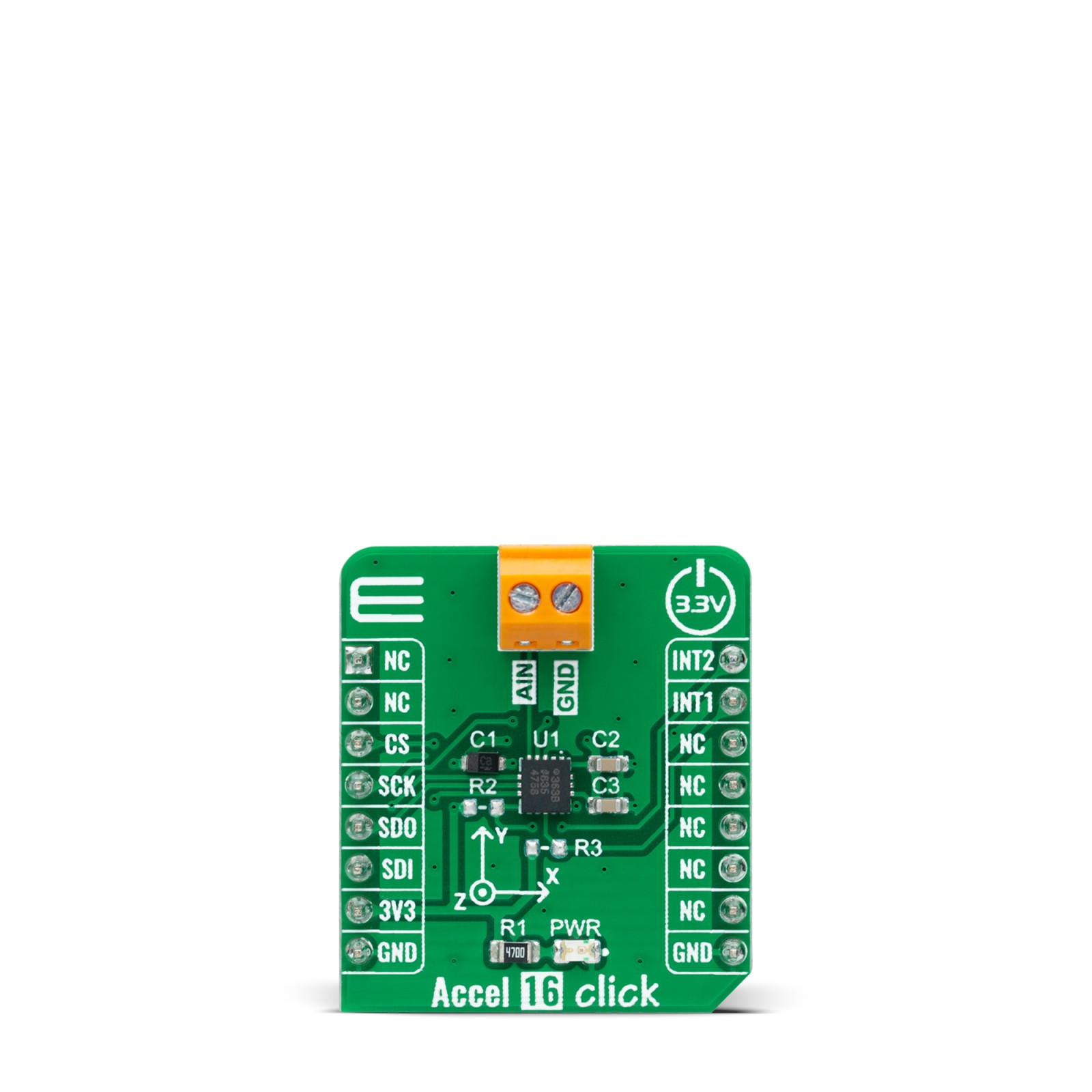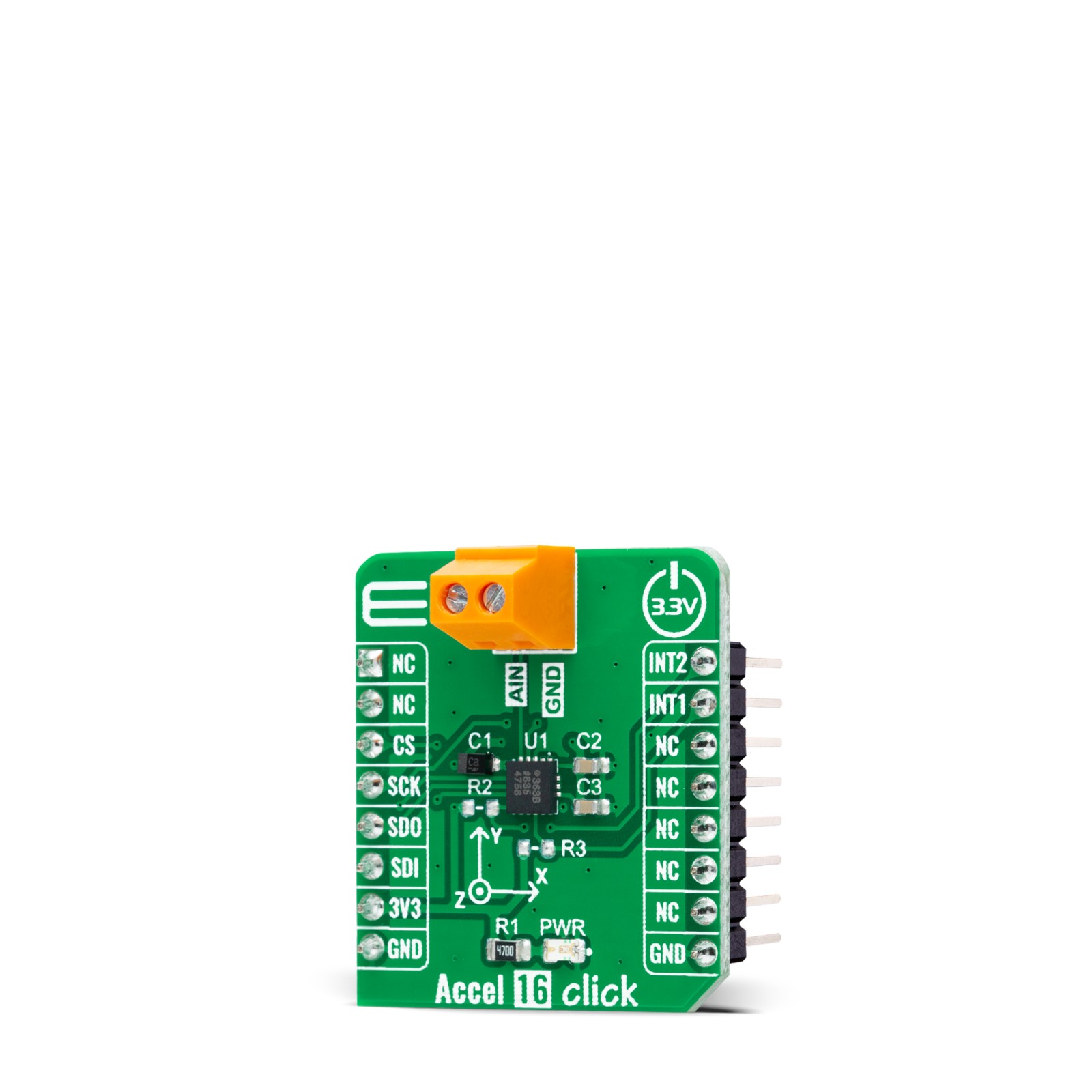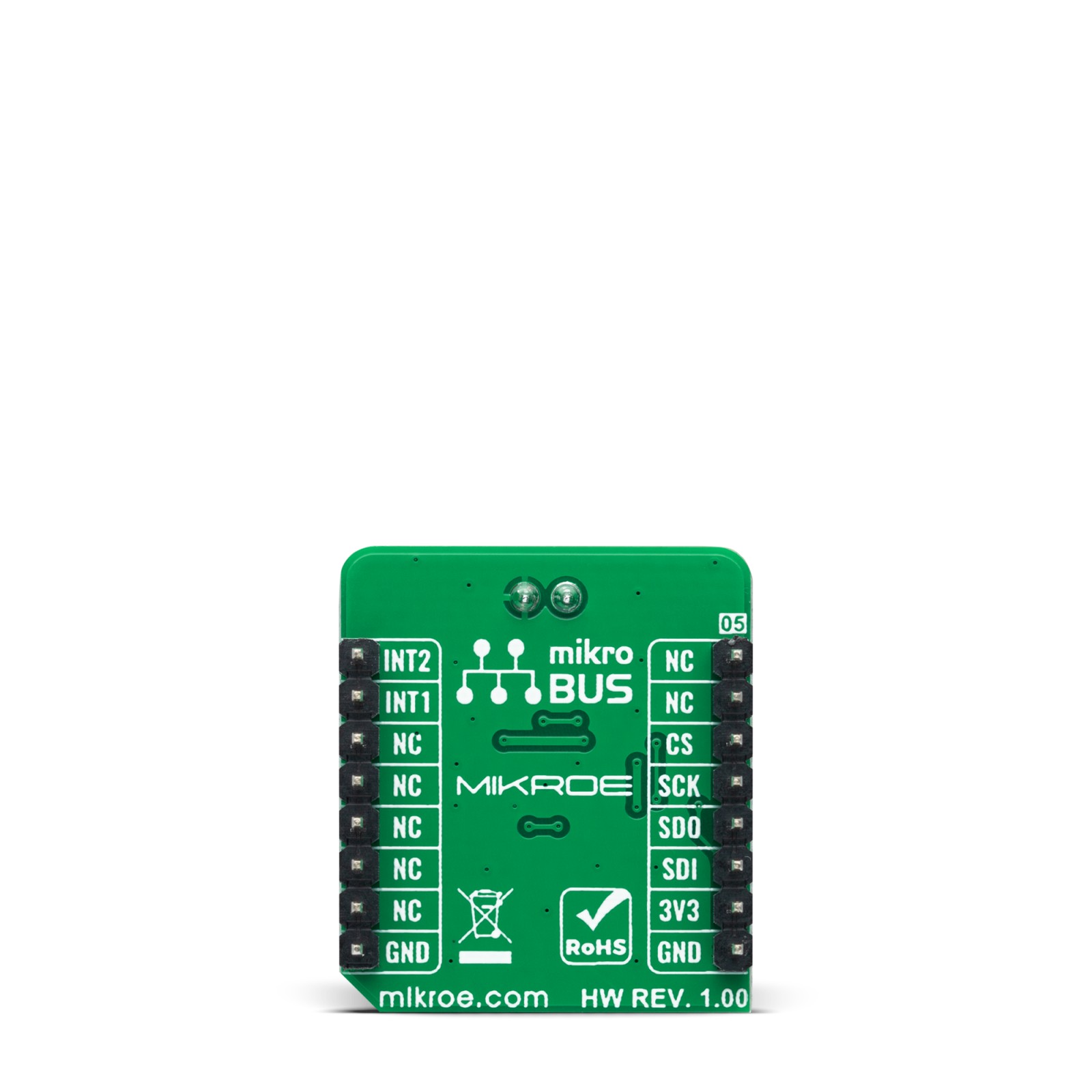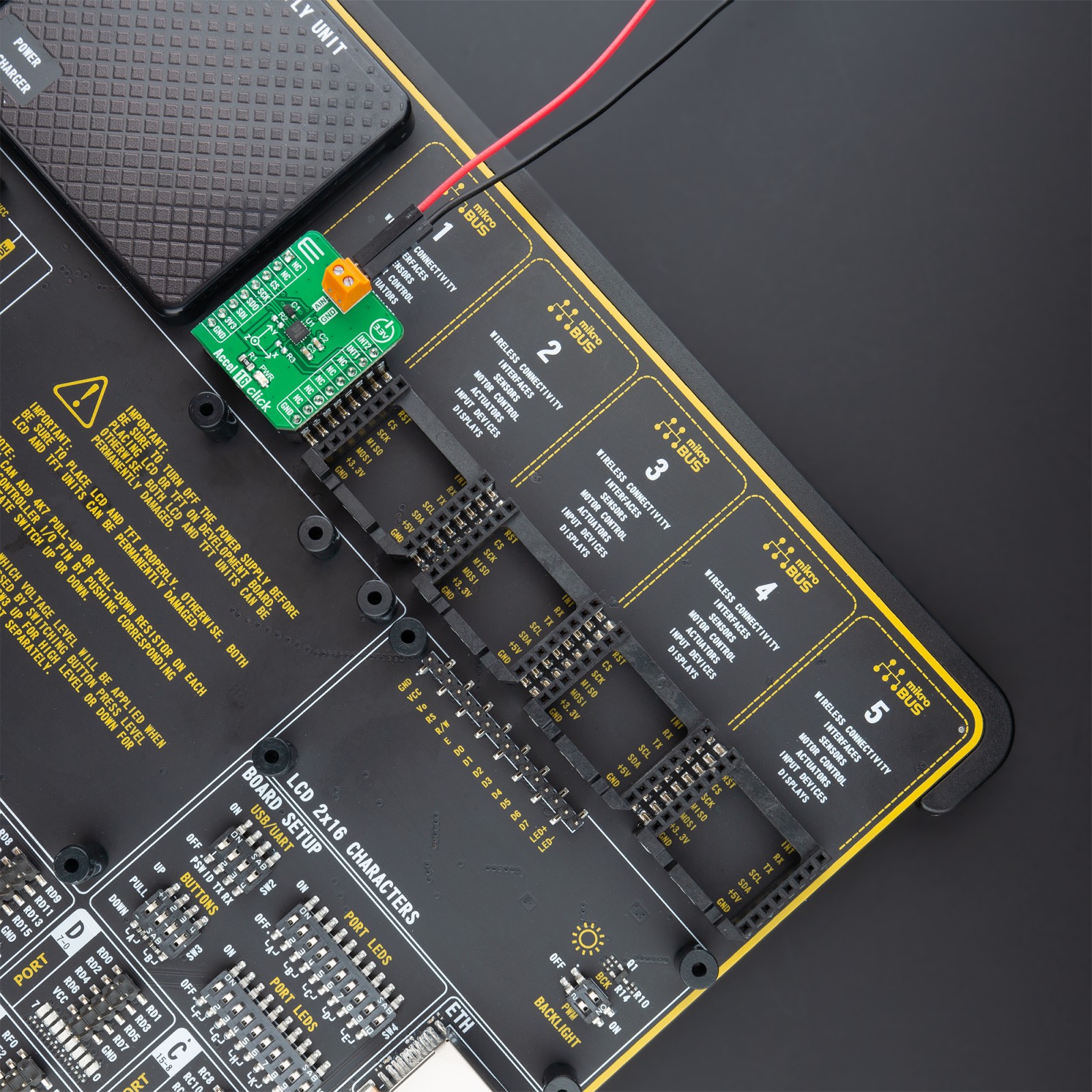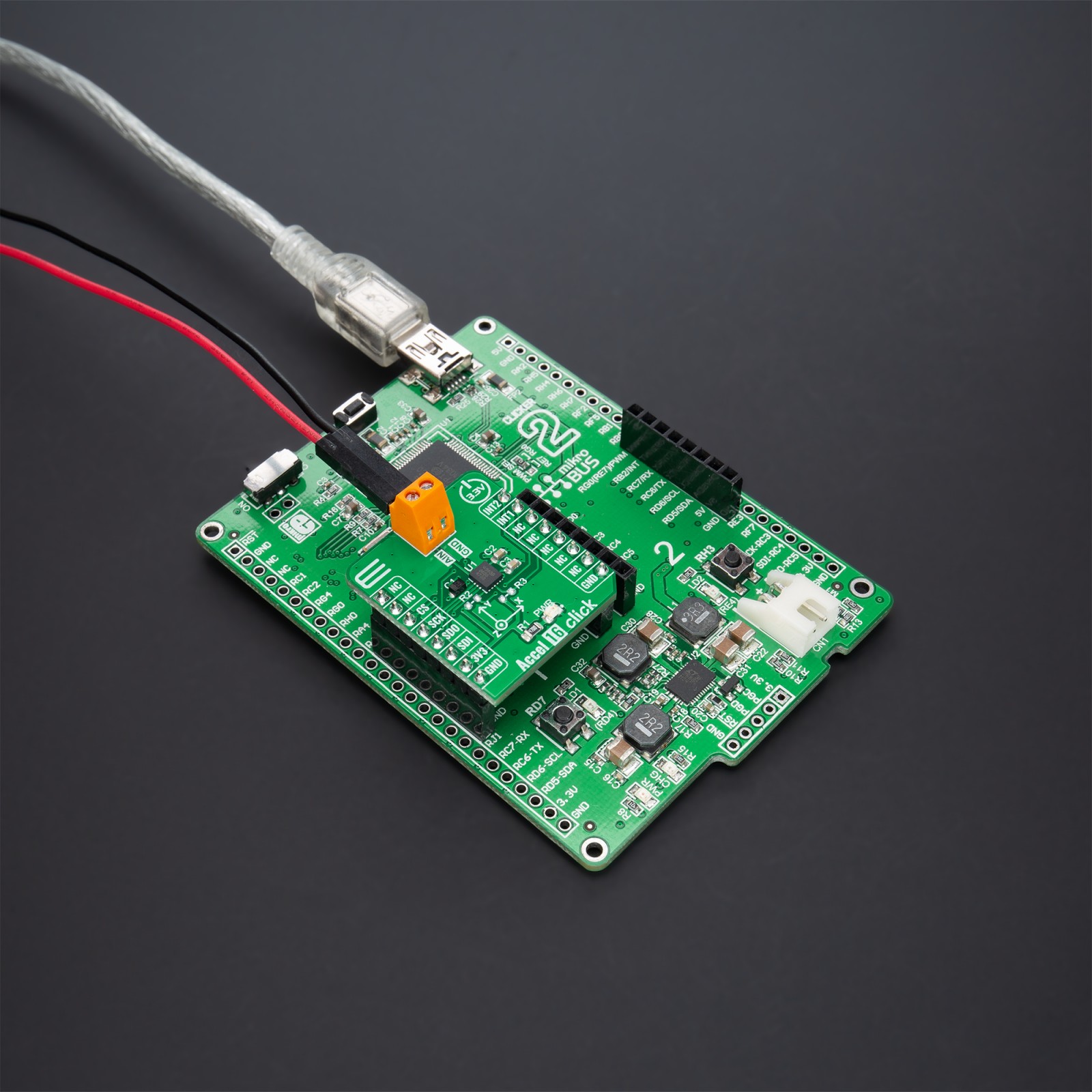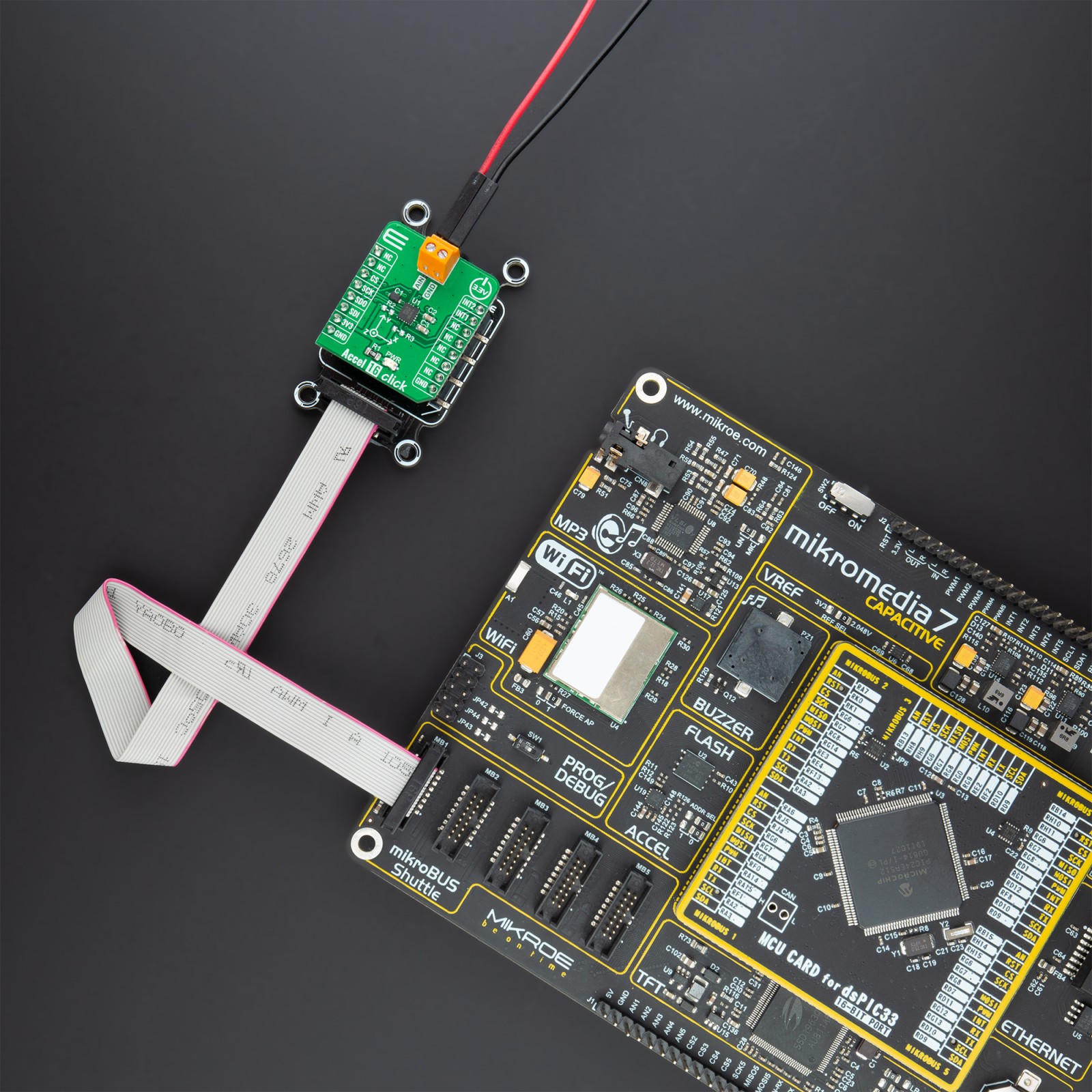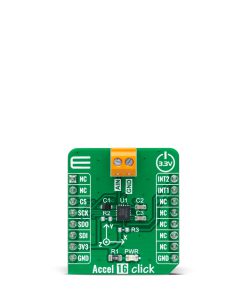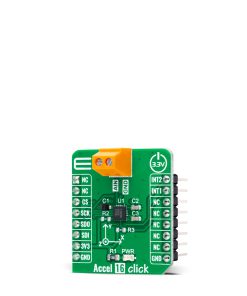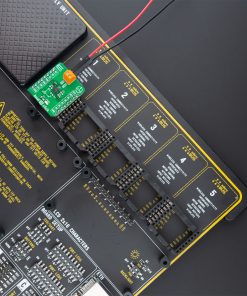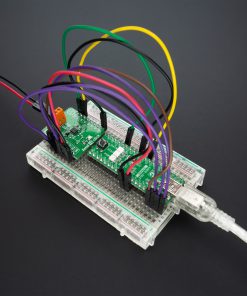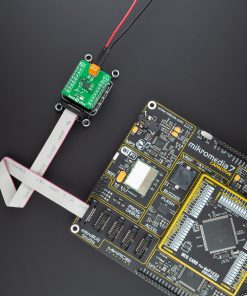Accel 16 Click
R370.00 ex. VAT
Accel 16 Click is a compact add-on board that contains an acceleration sensor. This board features the ADXL363, a micropower three-sensor combination including acceleration and temperature from Analog Devices. This device combines a 3-axis MEMS accelerometer, a temperature sensor, and an analog-to-digital converter (ADC) input for synchronized conversions of external signals. It allows selectable full-scale acceleration measurements in ranges of ±2g, ±4g, and ±8g (with a resolution of 1mg/LSB on the ±2g range), and communicates via SPI serial interface providing 12-bit output resolution for all three sensors. This Click board™ is suitable for various applications such as vibration and condition monitoring, test and measurements, predictive maintenance, and more.
Accel 16 Click is supported by a mikroSDK compliant library, which includes functions that simplify software development. This Click board™ comes as a fully tested product, ready to be used on a system equipped with the mikroBUS™ socket.
Stock: Lead-time applicable.
| 5+ | R351.50 |
| 10+ | R333.00 |
| 15+ | R314.50 |
| 20+ | R302.66 |

